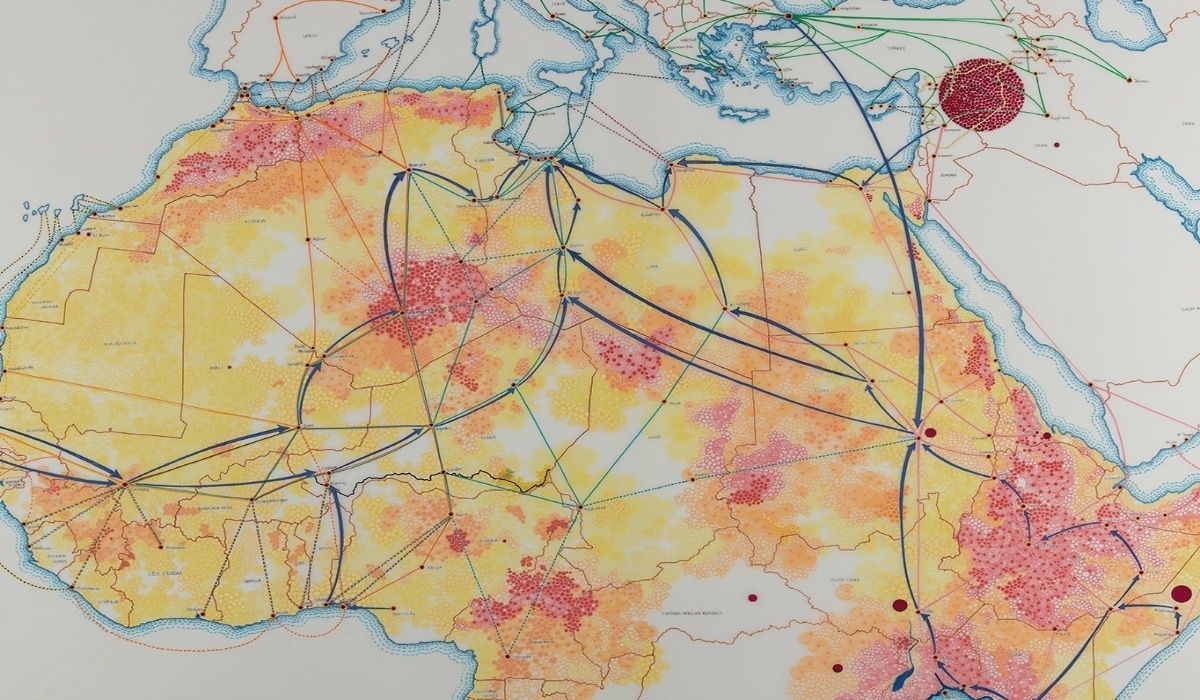People are moving, relocating and they aren’t always armed with a set route. We catch glimpses of their journey on the news. Usually a scene of orange lifejackets and dark choppy water as they flee from their homeland. Tiffany Chung is a Vietnamese-American interdisciplinary artist tracking down these stories through maps. She is not a stranger to the perils of the people’s stories she is documenting through her artworks. In fact, Tiffany was a refugee from the Vietnam War and has consequently worked on exploring the alternative often untold narratives from the conflict. Born in Đà Nẵng, Viet Nam in 1969, she and her family managed to make their way to America unlike many escaping the conflict.
Through her personal experiences, she has gained an interest in borders, not only the ones that divide places but people too. Her artworks are the result of extensive research that expresses itself in intricate color-coded geographic maps where she describes the movements of populations over borders, oceans, and continents. The research process includes searching archives, demographic statistics, and individual narratives. Often, the final product ends up being a cumulation of history, politics and individual stories that have been overlooked in official records. In the past, she has created studies of her own story of forced migration from Vietnam and the more recent Syrian humanitarian crisis.
Cartography has become a way to present hidden histories in Tiffany’s works, to the extent that the resulting artworks are not only aesthetic to look at but have become educational in nature. Her maps aren’t meant to correct or replace existing accounts but to instead challenge and expose alternative versions. There are many actors involved in the conflict, and hearing their multiple stories is a way to shine a light on complicated issues.
Scale is also an important feature when viewing her works. The tiny dots and meticulous lines simultaneously account for personal stories and a single shared collective testimony of loss and heartbreak. At first glance, the abstract organic shapes splattered across her detailed maps appear random, until you take a step closer to realize that there is a key and each line, speckle, and curve describes a story of anguish and despair. In some works, she uses embroidery to weave a similar untold story.
The purpose of maps is not lost on her either. Tiffany takes a more critical stance, questioning not only the nature of maps but the borders that make them up and the hidden agendas behind them. There are colonial links that she explores when mapping fictional borders and the movements that occur across them. Typically, maps are used for mobility and are relied on for their accuracy and straightforward logic to get people from one location to another. Tiffany takes this notion and turns it on its head, instead of using maps as a tool to catalog and reflect experiences and journeys. It’s a way to focus and grapple a difficult and often turbulent past. She explores a wide variety of themes through cartography, ranging from conflict, displacement, migration, and memory. This only solidifies the idea that maps can reveal a lot, depending on who has made them and why.


